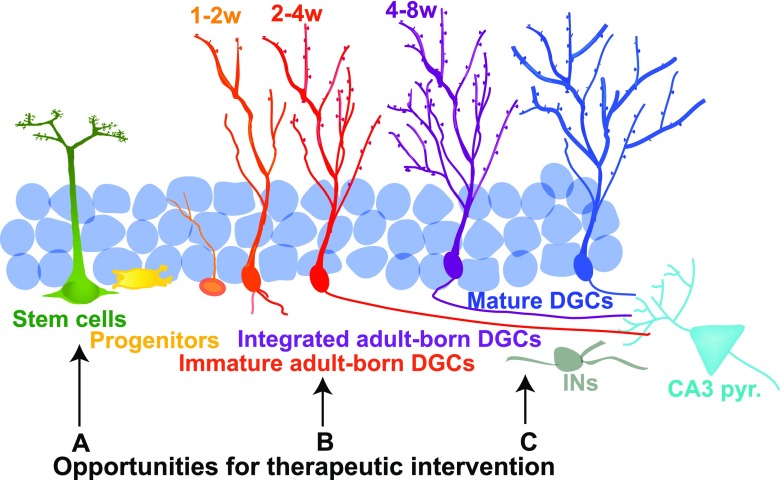Fig. 2.
Schematic of adult hippocampal neurogenesis and opportunities for intervention. Adult-born dentate granule cells (DGCs) arise from neural stem cells in the subgranule zone of the DG, with activated neural stem cells giving rise to transiently active progenitors, which differentiate into immature DGCs. Immature DGCs form afferent and efferent connections in a stereotyped order, and the acquisition of these inputs (initially γ-aminobutyric acid, and then glutamatergic inputs from the entorhinal cortex) governs their survival and integration into the hippocampus. Opportunities for therapeutic intervention to increase the adult-born DGC population or to mimic their effects on the circuit are highlighted: (a) removal of age-related molecular breaks on stem-cell activation and proliferation; (b) promoting integration of adult-born DGCs; (c) modulating DGC connectivity to increase feed-forward and feedback inhibition. IN Interneuron

